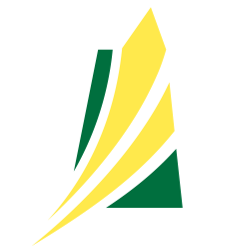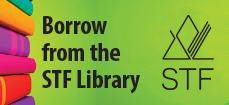Accounting 10, 20, 30
Course Configurations
ACCT31C
Module 31C: Depreciation (Optional)
Outcome
Examine depreciation of fixed assets through journals and fixed asset records.
Indicators
| (a) | Describe the function of depreciation as connected to journal entries. |
| (b) | Identify accounting concepts, principles, and practices (e.g., historical cost, matching revenue expenses, obsolescence, salvage value, book value) related to fixed assets. |
| (c) | Define fixed assets and describe how the amount of depreciation is calculated. |
| (d) | Analyze how accounting for depreciation affects fixed assets. |
| (e) | Compute the amount of estimated depreciation expense and prepare journal entries using the straight-line method of depreciation for full and partial years. |
| (f) | Explore and differentiate methods such as declining- balance, sum-of-the-years digits, production-unit method, and capital cost allowance for calculating depreciation. |
| (g) | Prepare journal entries for the disposal of fixed assets which have an accumulated depreciation account, calculating for each situation, disposing for a gain, a loss and at book value. |
| (h) | Calculate and record depreciation of fixed assets in a journal and fixed asset records. |
Loading...


R104103
Century 21 Accounting: Multicolumn Journal. Working Papers, Chapters 1-17(11th edition)
This is a non-reproducible student resource that has end-of-lesson, end of-chapter and reinforcement activities, as well as chapter study guides that complement the corresponding textbook chapters. It includes journals, ledgers, chart of accounts, banking forms, petty cash reports, bank reconciliations, worksheets, balance sheets, income statements and post-closing trial balance forms.

R104104
Century 21 Accounting: Multicolumn Journal. Working Papers, Chapters 18-24(Eleventh edition)
This is a non-reproducible student resource that has end-of-lesson, end of-chapter and reinforcement activities, as well as chapter study guides that complement the corresponding textbook chapters. It includes worksheets for capitol growth and development, assets, depreciation, and intangible assets, inventory, accruals, deferrals and reversing entries, end-of-fiscal work for corporations, accounting for partnerships, and worksheets for recording international and internet sales.

R103903
Century 21 Accounting: General Journal(11th ed.)
This student resource is divided into 24 chapters that have the following subsections: 21st Century Skills, Critical Thinking Activities, Think Like an Accounting, Financial Literacy, Global Awareness, Ethics in Action, Forensic Accounting, Careers in Accounting and Accounting in the Real World. This resource promotes problem solving, discussion and creative thinking while building knowledge of accounting practices. One of the main differences between this and other common textbooks for accounting is that it introduces journalizing through the use of a general journal, not a combination journal. Special journals are still used in the textbook. Overall, the textbook would be appropriate for all three course levels.
(More information)

R010486
Cornerstones of Financial Accounting(Third Canadian Edition)
This comprehensive student resource has 13 chapters that provides accounting information, definitions, summaries and exercises in each chapter. Case studies provide examples of how accounting decisions impact real world businesses. Due to the high ratio of text in this resource, it may be most suitable as a teacher resource for enrichment activities for intermediate or advanced high school students.

R032510
Accounting 1(7th ed.)
This Canadian textbook contains 12 chapters of current accounting practices, procedures and technologies. The exercises, case studies and computer applications reinforce the concepts presented and the career profiles provide real-world examples. A chapter review highlights accounting terms, review exercises, activities and questions to consolidate the learning.
•
Accounting 1. Student Workbook
•
Accounting 1. TestGen Test Bank

R002683
Accounting 101: From Calculating Revenues and Profits to Determining Assets and Liabilities, an Essential Guide to Accounting Basics
This book is organized into seven chapters that introduce topics and basic accounting terms using accessible language. This resource provides interesting facts and a history of accounting, and includes topics such as accounting scandals, fraud and big companies.

R037839
Century 21 Accounting Multicolumn Journal(10th ed.)
This textbook has the same content as the Century 21 Accounting Multicolumn Journal, Introductory Course, Chapters 1-17 (10th ed.) with two additional parts: Accounting for a Merchandizing Business Organized as a Corporation –Adjustments and Valuations; and Additional Accounting Procedures.
•
Century 21 Accounting Multicolumn Journal. Instructor's Resource CD
•
Century 21 Accounting Multicolumn Journal. Instructor's Resource Kit
•
Century 21 Accounting. Multicolumn Journal, Introductory Course, Chapters 1-17

R040970
Accounting Principles, Volume 2(8th Canadian ed.)
This second volume of the Canadian edition offers 10 more chapters on accounting concepts and principles. It includes terminology, ethical insights, decision making activities, exercises, action plans, comparisons and demonstrations.

R032771
Accounting Principles, Volume 1(8th Canadian ed.)
This Canadian edition is a comprehensive binder about accounting that offers basic terminology, ethical dilemmas, decision-making problems, exercises, comparisons, demonstrations, problems, challenge questions and real-life connection throughout the 10 chapters.

R033001
Financial Accounting: Tools for Business Decision-making(7th Canadian ed.)
This Canadian resource provides guided instruction on a variety of activities and projects related to business and accounting. Organized in 14 chapters, it offer unique real world connections, activities, projects, ethical dilemmas and decision making tasks.

R009355
Financial Accounting(Seventh Canadian Edition)
This resource consists of 10 chapters which contain a variety of information, assignments, activities, projects, ethical questions and business analyses that may be more suitable for accounting students. There are may project ideas located in the Stop + Think, Cooking the Books, and Spotlight on Businesses sections. There is an online component to this resource that offers tutorials, homework and assessment program.



